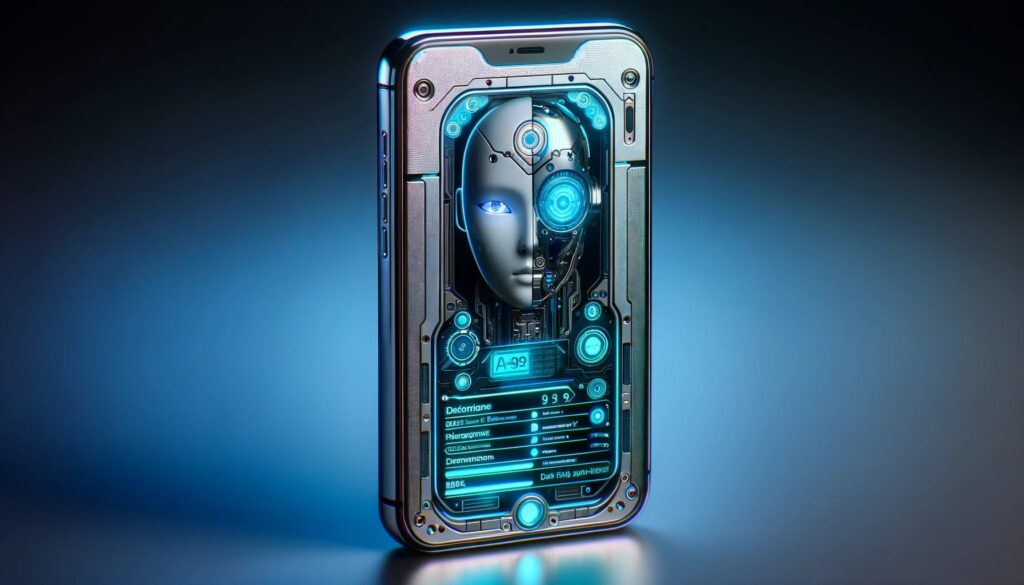The Worldwide Developers Conference (WWDC) is less than a week away, set to kick off on June 10 at Apple’s headquarters in Cupertino, California. This year, Apple is expected to unveil its big generative AI push with new capabilities for the iPhone. These moves are likely to energize investors who have been anxiously awaiting Apple’s foray into generative AI. However, it is important to note that generative AI itself may not spur a new iPhone sales supercycle this year. When it comes to smartphones, users tend to prioritize hardware over software.
Thomas Husson, vice president and principal analyst at Forrester, explained, “I don’t think it’s going to become the primary reason why people buy an iPhone. It’s more likely going to augment experiences.” This suggests that while generative AI may enhance user experience, it won’t necessarily drive immediate iPhone purchases. Nevertheless, generative AI could still power iPhone sales in the coming years as older phones become unable to run these advanced AI experiences, prompting users to upgrade.
The typical consumer is generally more concerned with hardware features when buying new smartphones. Gene Munster, managing partner at Deepwater Asset Management, highlighted that consumers prioritize screen size, camera quality, and battery life over software capabilities. This indicates that the initial impact of generative AI on iPhone sales may be limited. Additionally, the generative AI software is still relatively new, and many consumer offerings are basic. For example, Microsoft’s Copilot provides tips on fixing common PC issues, and Google’s Gemini for Workspace assists in drafting emails. However, there is no must-have generative AI app that would drive consumers to upgrade their smartphones specifically for these features. Even Microsoft’s AI-centric Copilot+ PCs are more intriguing for their new Qualcomm chips than for the AI software they incorporate.
Ramon Llamas, IDC research director, pointed out that the average consumer might not immediately see the value of generative AI on their iPhone. “If you go to Joe and Jane Smith on Main Street, USA, and say to them, ‘Hey, you can have Gen AI in your iPhone,’ now they’re going to say, ‘Great. Now, what do I do with it?’ And that’s the intersection that we find ourselves at right now,” Llamas explained.
According to Bloomberg reporter Mark Gurman, Apple will roll out a new, smarter version of Siri that allows users to control apps with their voice, transcribe recordings, and utilize new photo editing tools and enhanced notifications, all powered by generative AI. While making Siri more useful would be a significant improvement, it remains to be seen how frequently people will use the voice assistant for tasks beyond setting timers or checking the weather. Transcription and photo editing tools are also helpful, but Google and Samsung already offer these features, and they have not been major drivers of sales.
The real potential for generative AI to impact iPhone sales lies in how developers use these technologies to improve third-party apps. Most users spend the majority of their time on their iPhones using third-party apps like WhatsApp, TikTok, or Gmail. The same will likely be true for generative AI-powered apps, but it will take time for developers to create and optimize these applications.
Although generative AI might not lead to a sales boom this year, it will likely encourage consumers to upgrade their iPhones in the future. Generative AI features will require Apple’s latest chips, and users with older phones will either be unable to use these functions or will experience slow performance. As Munster noted, “It’ll take six months, a year, two, three years, for people to start to understand that the hardware that they had pre-generative AI isn’t performing as well as your phone. The battery won’t last, because it will be putting more weight on the CPU or the AI chip … things like that. I think that this iPhone AI upgrade cycle, it’s like a two- or three-year cycle.”
Apple might still see a sales bump in September when it releases its next iPhone. The global smartphone market is beginning to recover after a two-year slump. According to IDC, global smartphone sales are expected to improve by 4% year over year in 2024, with the majority of growth coming from Android sales. However, iPhone shipments are also expected to increase by 0.7%. While this is not a staggering number, it is still an improvement.
The more significant sales boost is likely to come further down the line as Apple refines its generative AI features and developers create more generative AI-powered apps that challenge older iPhones’ capabilities. The anticipated supercycle of iPhone sales driven by generative AI will have to wait, but the groundwork is being laid for future growth. The company’s focus on integrating generative AI into its products demonstrates its commitment to staying at the forefront of technological advancements. This ongoing development will likely keep Apple competitive in the ever-evolving tech landscape.
If you like the article please follow on THE UBJ.
